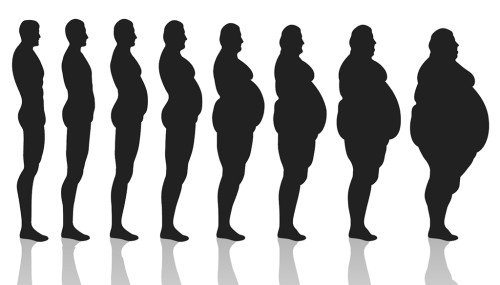Imagine you have a big barrel of crude oil in the trunk of your car. Even though your car’s engine uses gasoline, and crude oil is used to make gasoline, all that crude oil in your trunk isn’t doing you a bit of good unless it somehow gets converted into gasoline and put into your engine!
Your body is no different. Think of all that fat around your waistline like the crude oil in your car’s trunk. You can’t just take the fat and burn it right where it sits on your waistline, because your body must first convert the fat into a form of fuel that your body can actually burn for energy. Your body accomplishes that by taking the fat, sending it to the liver, and breaking it down in something called “free fatty acids,” which can then be used for energy.
What Must You Do to Lose Fat?
Why do I use this gasoline analogy? Because to lose fat, you must put your body into a state where it needs to burn its crude oil (fat) for energy. If you’re constantly pulling over at gas stations and getting more gasoline, your body will never even think about tapping into that crude oil in your trunk. So to burn through that crude oil you need to A) avoid frequent gasoline stops and B) drive your car.
What Happens if You Lose Fat too Quickly?
Before we can talk about safely losing weight quickly, we must first discuss what happens if you lose fat too quickly. You body, just like a car, doesn’t operate very well on fumes. But unlike a car, your body will actually start to break down its parts and turn them into fuel if you don’t have enough energy on board.
In other words, you will literally start to cannibalize non-fat tissue, stop making hormones, slow down your metabolism, and have lots of other nasty effects if your calorie deficit is too low!
That is why very low-calorie diets, such ones where you just drink juice made from cayenne pepper, lemon juice, and bits of maple syrup, seem to work very well at first, but then rate of weight loss slows, the immune system weakens, exercise and muscle toning become impossible, and eventually, you return to eating lots of food and yo-yo-ing until your weight comes right back up. The same effect can happen if you exercise too much, but in that case, you not only pay the metabolic price, but you can also do permanent damage to your joints.
How Fast Can You Safely Lose Weight?
So when it comes to calorie intake, how little is too little, and how much is too much exercise? Although the numbers vary widely, because people come in all shapes, sizes and weights, a safe and permanent fat loss strategy is approximately 1-3% body fat loss per month, which comes out to around 2 pounds per week for most people. Most people can achieve this with an hour of moderate exercise a day combined with a daily calorie deficit of approximately 500 calories.
However, if you’re willing to put up with fatigue, nausea, constipation, or diarrhea, a very low-calorie diet of 800 calories per day or less can increase your weight loss to 3-5 pounds per week. Although this type of diet shouldn’t be combined with exercise, you could mimic the effects of a very low calorie diet by eating 1500-2000 calories per day and exercising for 1.5-3 hours per day–in which case the gym and treadmill will become your very close friends.
What Are the Best Fat Loss Exercises?
Usually, multi-joint, full body exercises such as a squat to overhead press, deadlift to curl, or uphill run on a treadmill are the fastest way to burn calories, increase fat-burning hormones, add lean muscle, and lose fat. But if you’re doing a high amount of exercise for fast fat loss, such as 1.5-3 hours per day, you’ll want to include non-weight bearing or non-impact exercise to protect your joints–such as riding a bike, using an elliptical and, rowing machine, swimming, and performing cable or elastic band movements.
What Is The Best Fat Loss Workout?
If you’re just getting started, and especially if you are obese, this type of routine can be tough, so you may need to simply start with a daily routine of light, aerobic cardio, such as a 30 minute walk each morning, combined with easy resistance training, such as three sets of 12 repetitions for each of your muscles, using a weight machine or set of home dumbbells.
After 4-6 weeks of this type of activity, you should be able to add cardiovascular intervals mixed with weight training. If you need to lose weight more quickly than that, and you’re not currently completely inactive or obese, you can combine weight training with cardiovascular intervals 6 days per week, with one easy, aerobic recovery day, and continue this type of training for 4-6 weeks, before taking an entire easy, recovery week to give your hormones, joints, heart and mind a break.
Is There a Fast Fat Loss Diet?
As mentioned earlier, severe calorie restriction will certainly accelerate weight loss temporarily, but may have lasting health effects, and be intensely uncomfortable. In reality, when total calorie intake is equal, large studies haven’t shown that eating low-carbohydrate is any better for weight loss than high-carbohydrate, high-fat, or high-protein.
Ultimately, most diets have very good weight loss potential, but the health potential may be something different altogether. However, when you’re exercising for fast fat loss, it can be helpful to cycle your calories.



2 comments
I am 45 years wish to loose weight
need to lose weight